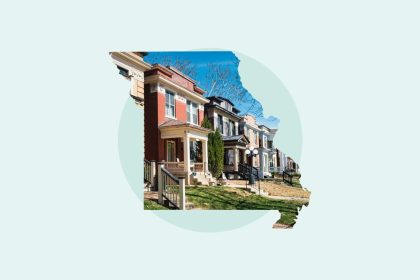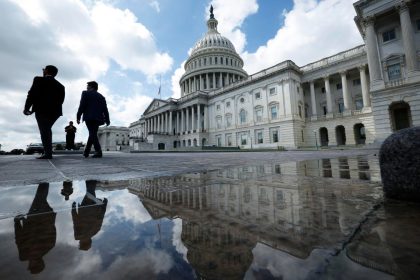Homeowners can take steps to prepare their homes against hurricane damage, yet many still need to do so, a recent survey said.
In 2023, 47% of respondents said they had no plan to strengthen their homes against hurricanes, according to the Federal Alliance for Safe Homes (FLASH) survey. Moreover, 59% of respondents said they do not have a plan against what is brewing to be a very active hurricane season this year.
Colorado State University hurricane researchers forecasted 23 named storms, 11 hurricanes and five major hurricanes during the 2024 season, which starts on June 1 and continues through Nov. 30. A typical Atlantic hurricane season has 14 named storms, seven hurricanes and three major hurricanes.
Most respondents said they skipped preparation because they didn’t think hurricanes would impact their homes, yet inland communities are still at risk of storm damage. Hurricanes have the potential to travel up to 100 to 200 miles inland and can pose a flooding threat to these communities, so preparing for residual storm damage could help homeowners save money if they sustain weather-related damage.
Other reasons respondents chose not to prepare their homes included affordability, cost and a lack of knowledge about how to prepare.
“The above findings indicate that targeting messaging about wind and flood risk potential (especially inland), affordable preparedness options, and how to prepare can help increase the number of those that take action,” the survey said.
Homeowners should be prepared for what’s shaping up to be an active hurricane season. If you want to make sure you have enough insurance and the right coverage for your needs, you can visit Credible to check out plans, providers, and costs.
HOMEOWNERS COULD SAVE TENS OF THOUSANDS IN DAMAGES BY USING SMART DEVICES
Time to check your policy
The first step for homeowners should be to check if they have enough coverage, according to a report by the Insurance Information Institute.
Rising inflation has increased the costs of fixing damage or replacing a home. For some homeowners, rising costs could bring the nasty surprise that they are underinsured. Being underinsured means owning an insurance policy that only covers a portion of losses in a claim, often because of exclusions or coverage limits. Policy owners could face higher out-of-pocket costs if their coverage hasn’t increased to reflect higher replacement values, the survey said.
“With home replacement costs escalating more than 55% since 2019 due to the higher costs of construction materials and labor, you should ask your insurance professional if you have the right amount of coverage to rebuild or repair your home, to replace its contents, and to cover temporary living expenses if your property is uninhabitable,” Triple-I CEO Sean Kevelighan said. “You should also ask about flood insurance, which is an additional coverage to standard homeowners, condo and renters policies, as well as a small business insurance policy. Nearly 90% of U.S. natural disasters involve flooding so most areas of the country are prone to flooding.”
If you have a mortgage, you’re typically required to carry homeowners insurance, but you don’t have to stick with any particular insurance company. If you want to save on your home insurance costs, you could shop around for the best rate. Credible can help you compare home insurance rates from top insurance carriers all in one place.
BUY A HOME IN THESE STATES TO GET STUDENT LOAN DEBT RELIEF
Here’s how to get your home hurricane-ready
Other steps to adequately protect your home from damage are to make your property more resilient. Homeowners should take simple steps like trimming trees around their property and securing any loose yard furniture and other equipment to minimize potential damage.
The FLASH survey said that a growing number of homeowners are willing to spend upwards of $1,000 to prepare their homes against hurricane damage compared to the last storm season. One key element that homeowners should consider is protecting all the openings in their homes: the doors, windows and the garage. Reinforcing the garage door, in particular, offers the greatest protection against high-speed winds and is one of the most important ways to mitigate catastrophic and costly hurricane damage.
“Garage doors are the largest and weakest opening on a home, and our post-storm investigations show that more than 90% of the time that hurricane winds and debris impact homes, garage doors are the first elements to fail, leading to progressive damage or even complete destruction,” FLASH President and CEO Leslie Chapman-Henderson said in a statement. “We need to help homeowners understand how an investment of less than $750 can spare their home from the most extensive and expensive damage.”
Whether your concern is hurricane damage, tornado damage, wind damage, flood damage or beyond, it’s best to obtain multiple quotes from several insurance companies to compare prices and what is and isn’t covered. To help you find the best insurance rate for your situation, visit Credible to compare multiple providers at once and choose the right option for you.
SECURE 2.0: OPTIONAL PROVISIONS KICK IN TO HELP RETIREMENT SAVERS WITH EMERGENCIES AND STUDENT LOAN DEBT
Have a finance-related question, but don’t know who to ask? Email The Credible Money Expert at [email protected] and your question might be answered by Credible in our Money Expert column.
Read the full article here


















